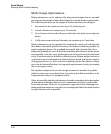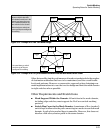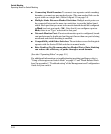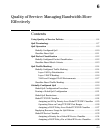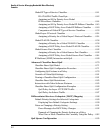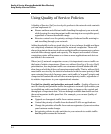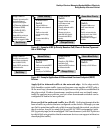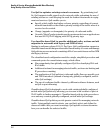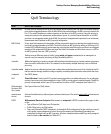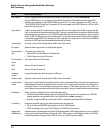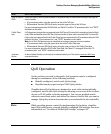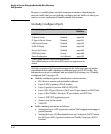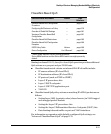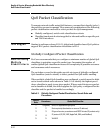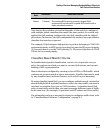
Quality of Service: Managing Bandwidth More Effectively
Using Quality of Service Policies
Use QoS to optimize existing network resources. By prioritizing traf-
fic, QoS supports traffic growth on the network while optimizing the use of
existing resources—and delaying the need for further investments in equip-
ment and services. QoS enables you to:
■ Specify which traffic has higher or lower priority, regardless of current
network bandwidth or the relative priority setting of the traffic when it is
received on the switch.
■ Change (upgrade or downgrade) the priority of outbound traffic.
■ Override “illegal” packet priorities set by upstream devices or applications
that use 802.1Q VLAN tagging with 802.1p priority tags.
Use classifier-based QoS to provide additional policy actions and aid
migration in networks with legacy and OEM devices.
Starting in software release K.14.01, ProCurve QoS configuration supports a
classifier-based model that provides added functionality to create and manage
QoS policies across a network consisting of ProCurve switches as well as OEM
and legacy devices.
The classifier-based configuration model is a single, simplified procedure and
command syntax for cross-feature usage, which offers:
■ Finer granularity than globally-configured QoS for classifying IPv4 and
IPv6 traffic
■ Additional actions for managing selected traffic, such as rate-limiting and
IP precedence marking
■ The application of QoS policies to inbound traffic flows on specific port
and VLAN interfaces (instead of using only globally-configured, switch-
wide QoS settings)
■ The use of configured traffic classes by different software features, such
as QoS or port mirroring
Classifier-based QoS is designed to work with existing globally-configured,
switch-wide QoS policies by allowing you to zoom in on a subset of port or
VLAN traffic to further manage it. Classifier-based policies take precedence
over and may override globally-configured, switch-wide QoS settings.
Classifier-based QoS policies provide greater control for managing network
traffic. Using multiple match criteria, you can finely select and define the
classes of traffic that you want to manage. QoS-specific actions determine
how you can handle the selected traffic.
6-6



